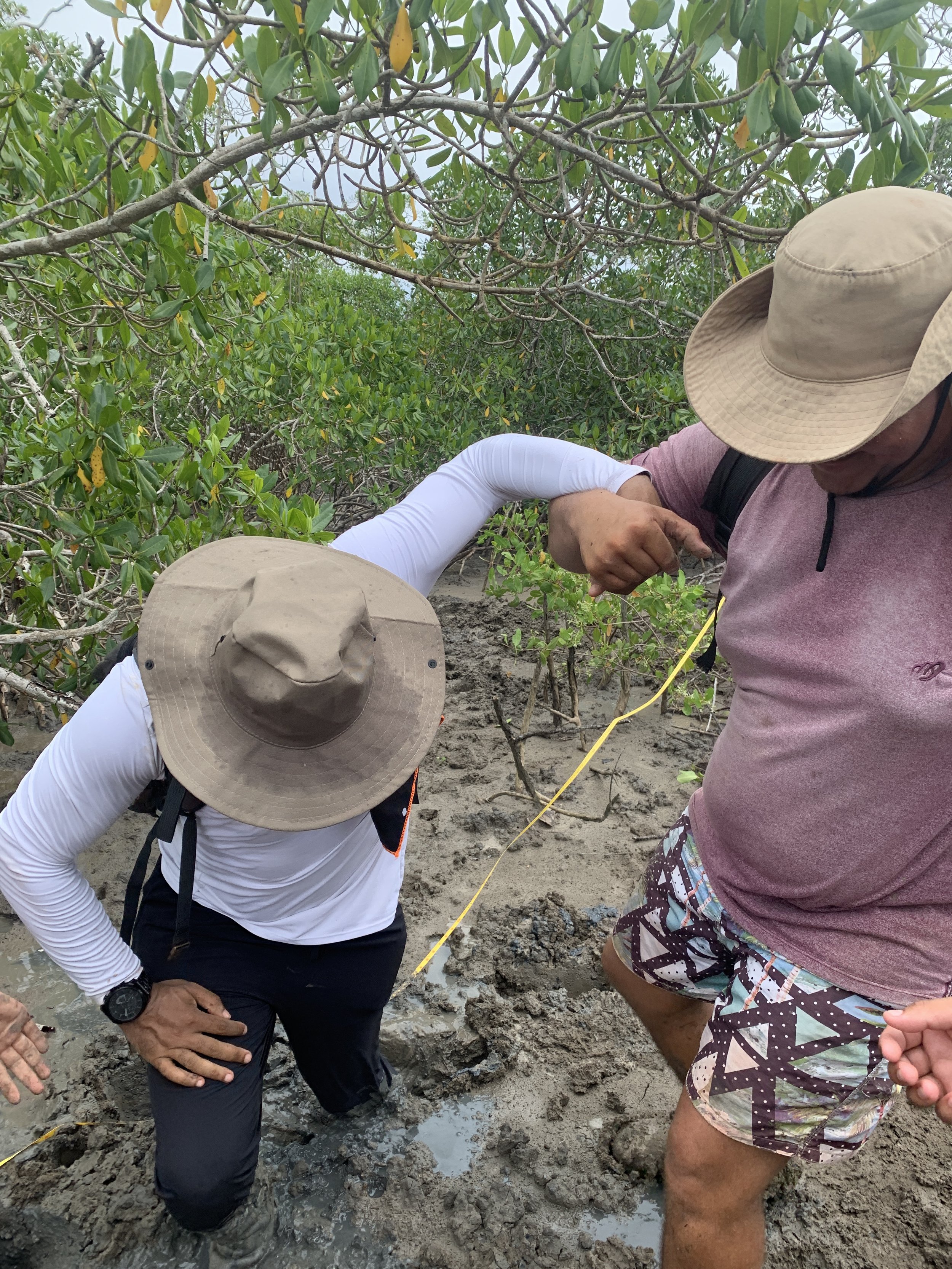Recently, we reached the milestone of planting 100,000 mangrove trees in Alcântara! There is a story behind every seedling.
Planting in the mud
Part of our team arrive in Maranhão in early 2021. It is our first visit and the unique culture immediately catches your attention: it feels like we're in a "different Brazil". Walking through the Historic centre of São Luís, you hear a rhythm playing in every bar and on every corner - a mix of reggae and the sounds of the Brazilian northeast rarely heard outside of this island known as the reggae capital of Brazil". With capoeira on the beach and “crioula drum” circles framed by 18th and 19th-century colonial buildings, and a local accent instantly recognisable anywhere in Brazil. Maranhão has so much history and culture in one beautiful place.
The exact origin of this deep connection between São Luís and reggae is unclear. Some say it started gaining popularity in the region in the 1970s arriving from the Caribbean on radio waves or on the waves of the sea with sailors bringing records to the port town. Initially, the rhythm found its place in the outskirts. One of our partners shared that as a teenager he was forbidden by his parents from attending reggae parties (it didn’t work, and today he is a DJ). Maranhão is the only place in the world known for its unique way of dancing to reggae, with two people together, like salsa, holding each other: reggae agarradinho.
Unfortunately, our second impressions weren't so good. Beyond the beautiful culture, Maranhão has the highest rate of people in vulnerable social situations in Brazil, and it was evident during our visit. We saw how many mangrove areas were degraded and how many people depended on coastal resources - fishermen, boatmen, crab catchers. This led to a third impression, strongly felt from within: a coastal restoration project is vital here.
Sailing to Alcântara
We spent many of our days on a large, slow ferry (a roulette between onboard cockroaches or dubious live music), or on a lancha speedboat (extremely fast but noisy). Our project in Maranhão started in Alcântara, a small town of about 20,000 inhabitants, more easily accessed by sea. From São Luís to Alcântara, it took two hours… or sometimes three or four, depending on the age of the ferry.
From this point, we met the team on the ground of a project that goes beyond ecological restoration and reforestation. We were welcomed by four quilombola communities: Japeú, Camuritiua, Esteio and Macacos. They teach us about mangrove swamps, which are difficult to negotiate, with mud reaching to chest height. More than a few times they had to haul us out from a sticky situation.
Our gracious co-director James needs a little help getting around.
What are quilombos?
From the 16th century to the end of slavery in 1888,Africans and their descendants have escaped slavery and formed communities in hard-to-reach areas. With the help of Indigenous peoples, they developed sustainable and independent ways of life far from monoculture farms and their overseers: these communities are called quilombos (the adjective is quilombola) Today, there are about 6,000 quilombos across 24 Brazilian states, but fewer than 200 have official titles granting land rights to the quilombola people.
Quilombolas, with their agricultural traditions, have preserved for centuries heirloom seeds and also the traditional knowledge required to plant them. They shared this knowledge with neighbouring farmers and created innovative agroforestry systems, combining fruit trees with native plants over thousands of hectares. This approach has ensured - and continues to ensure - the communities' food security while promoting biodiversity, hydrological systems and topsoil.
Looking to the stars (and not the earth)
In 1982, construction of the Alcântara Launch Center as part of Brazil’s space program forced the displacement of 312 Quilombola families from their original areas. After nearly three centuries of living, planting and walking these lands, the locals were "transferred" without prior notice to seven agro-villages far from the city. Some moved to coastal areas, where they learned to include crabs and other species in their diet and income sources.
Alcântara remains the municipality with the largest number of Quilombola communities in the country. It is sad to see that it also has a high rate of food insecurity.
We take great pride in and care about how we work: we listen to people, who truly understand the ecological impacts of land degradation and its consequences on their lives. They need more opportunities and access to training in order to feel more secure in using their land's resources sustainably. Based on this, we always hire local people to plant saplings and lead projects. This is the first short-term impact local people notice - happy communities doing more and being able to put food on the table. It can mean the difference between success and failure in a project.
Local project partner with mangrove propagules.
If you are considering donating, or if your company wants to see the difference a donation makes, we guarantee that this is one of the most rewarding aspects of community-led regeneration with long-term impacts.
Recently, we reached the milestone of planting 100,000 mangrove trees in Alcântara. As you can see, the story behind each seedling or seed is deeply connected to many layers and stories. But the effects of the initial work is already visible: the soil is healthier, crabs are reappearing more frequently and fishermen have reported seeing even a manatee. We can't wait to share more news and important milestones.
Photos showing mangrove seedlings growing and crabs appearing in our area.







